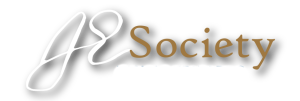Van Wyk, John R. To Understand Things as Well as Words: An Examination of Jonathan Edwards as an Educator and His Pedagogical Methodology. Wipf and Stock Publishers, 2025.
An area that has been neglected by Edwards scholarship up until now has been thoroughly examined and studied by John Van Wyk: the educational philosophy and practice of Jonathan Edwards. Beginning with his early teaching experiences and continuing through his tenure at Yale, pastoral ministry, mission work with Native Americans at Stockbridge, and his teaching at the College of New Jersey, this book traces Edwards’s professional connection with education.
Van Wyk’s study examines Jonathan Edwards’s letters from the Stockbridge mission, concentrating on his perspectives on education, pedagogical theory, and educational outcomes. It covers both primary and secondary sources, including Edwards’s personal background and the writings of major philosophers and educators, to determine their impact on his teaching techniques. The study looks into the theological issues Edwards raised with different student groups, such as Bible catechists and college students, as well as the dialogic process he used. Van Wyk examines Edwards’s correspondence, particularly with Sir William Pepperrell, to better understand the constancy of his teaching philosophy and approaches across educational environments. The study also looks at how students Bellamy and Hopkins responded to Edwards’s instruction and how they used the dialogic method in their own pedagogy. This extensive research seeks to establish Edwards’s consistent educational philosophy and technique throughout his career (18).
To Understand Things as Well as Words is divided into eight chapters.
1. Introduction: Jonathan Edwards as an Educator
2. Background: Puritanism
3. Background: Intellectual Trends Comprising “the Enlightenment(s)”
4. Further Influences on Edwards’s Pedagogy
5. Jonathan Edwards as a Teacher and His Pedagogical Methodology: Background
6. Jonathan Edwards’s Pedagogical Methodology: Locations
7. Edwards as Educator: Review and Educating the “Total Person”
8. Conclusion: Edwards as Multidimensional (and Multiple?)
Through his analysis, Van Wyk sheds light on the teachings of Jonathan Edwards and his strategies for imparting theology to a wide range of students. Van Wyk notes that a “theme that is central to this study is that Edwards’s goal as an educator was two-fold: to assist his students’ intellectual and spiritual development” (10). Edwards’s complete, theocentric approach to teaching and learning was impacted by a myriad of factors, including his classmates, resources, environment, and influences such as the Puritan legacy, as well as John Amos Comenius via Cotton Mather (125–32) and others. This study aims to examine all of these factors (17–18).
To fulfill his life’s work of spreading Christ’s kingdom, Edwards placed a premium on his educational philosophy. The research conducted by Van Wyk places Edwards in the context of the transatlantic theological and philosophical currents during his time (65–116). It follows how Edwards, though ambivalent towards much in his day, “made substantial withdrawals from the Enlightenment bank” of Locke, Newton, and Berkeley to bolster a biblical view of reality (115–16) and applied these ideas in real-life ministry settings, such as with families, congregations, Native American students, and ministers in training. Edwards’s comprehensive and dialogical (familiar) approach to education expressed in the Pepperrell letter is detailed in the book. It is of significant note how he used it with varied audiences, such as the Native American youth at Stockbridge (199–221) and students preparing for ministry (224–55).
Edwards is portrayed as an exemplar to be emulated by subsequent generations in Van Wyk’s research. It emphasizes the dialogical aspect of formative education and is described as thorough, in-depth, and analytical. Modern educators would do well to familiarize themselves with both Edwards’s and Van Wyk’s writings in order to have a better grasp of Edwards’s comprehensive pedagogy, which promotes a life of learning and the role of responsible students as image-bearers. (269–77). A fresh assessment of Edwards’s teaching style and a solid introduction to Edwards as a thinker, the volume meticulously examines the different impacts on Edwards’s teaching while painting a vivid picture of his interactions with Native Americans, children, and ministerial students.
Interview with John Van Wyk at https://edwardsstudies.com/2025/08/01/edwards-and-his-pedogical-methodology-interview-with-john-van-wyk/
